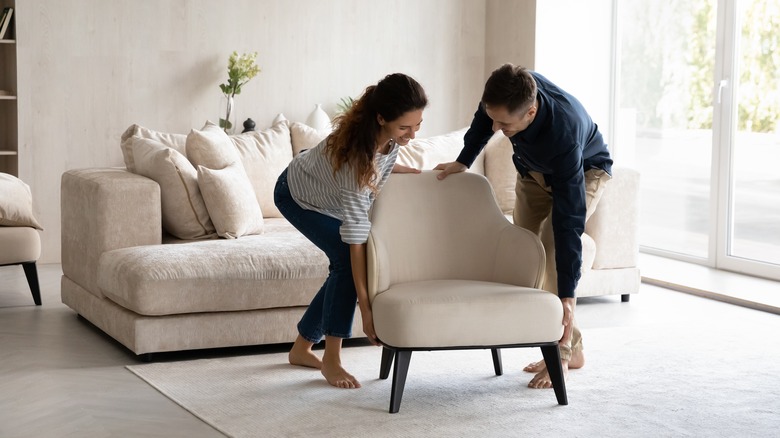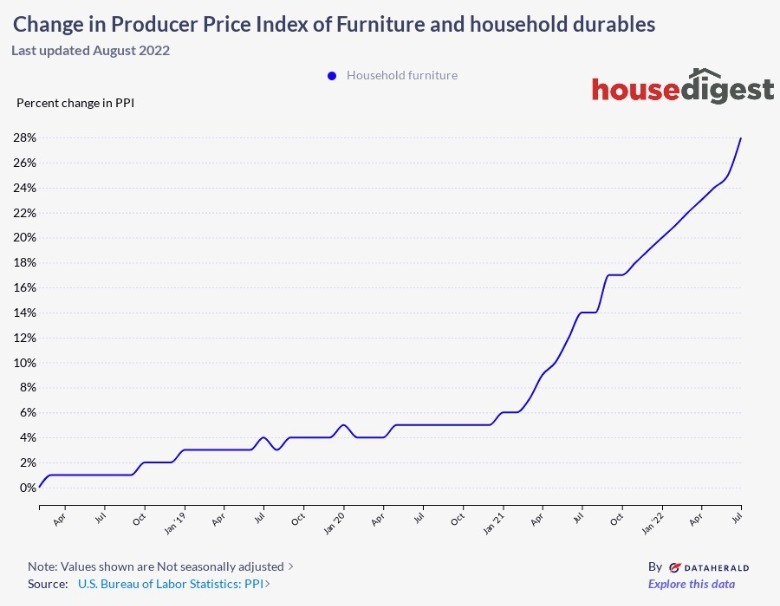The Price Of Household Furniture Has Gone Up Drastically
According to Producer Price Index (PPI) data collected from the U.S. Bureau of Labor Statistics exclusively by House Digest, the cost to produce household furniture domestically has increased drastically over the past two years. PPI, which measures the change in the cost to produce a consumer product over time, is an important metric when considering the impact of inflation since PPI prices are often the first commercial transaction for a product well before they are available in retail stores (per the Bureau of Labor Statistics).
To illustrate how rapidly the PPI for household furniture has increased, it's important to note that the PPI increased just 4% during the two-year period between February 2018 and February 2020. However, it doubled from 6% to 12% between January 2021 and June 2021, before doubling again from June 2021 to June 2022, with an overall increase of 25%. With consumer furniture prices rising in tandem, it's perhaps understandable why many homeowners are turning to short-lived, "fast furniture," explains The New York Times. However, cheaply-made and cheaply-priced furniture often comes with an environmental cost that isn't represented by their attractive price tag.
Why furniture production costs are high
While the recent price increase of bedroom furniture and other household goods is undoubtedly a burden on many homeowners, there may be a reason to be cautiously optimistic that prices will go down in the near future. According to Furniture Today, the current cost of producing household furniture is largely a byproduct of COVID-related supply chain disruptions caused by supply shortages, skyrocketing demand, and other issues. However, since many such factors have become less problematic since the pandemic's heyday, this is likely to be represented in PPI data moving forward.
On the other hand, along with inflation, certain manufacturing and logistical hurdles show no sign of being resolved anytime soon. Fuel costs and freight prices are two such factors that drive up the price that consumers pay for a given product — including furniture. While buying low-cost, low-quality furniture may seem like an attractive alternative to some homeowners given the uncertainty of today's economy, it's far from the only option. A quick look around local thrift stores and online marketplaces may be enough to score you a high-quality piece of vintage furniture, so you can also try your hand at your favorite vintage design trend.

